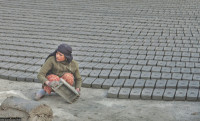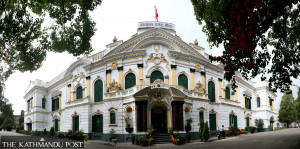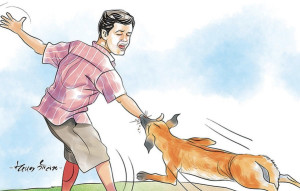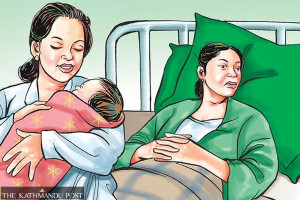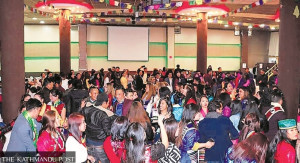Columns
Arresting the urban decline in Madhesh
Can federalism and the empowerment of local governments help reverse the movement of population?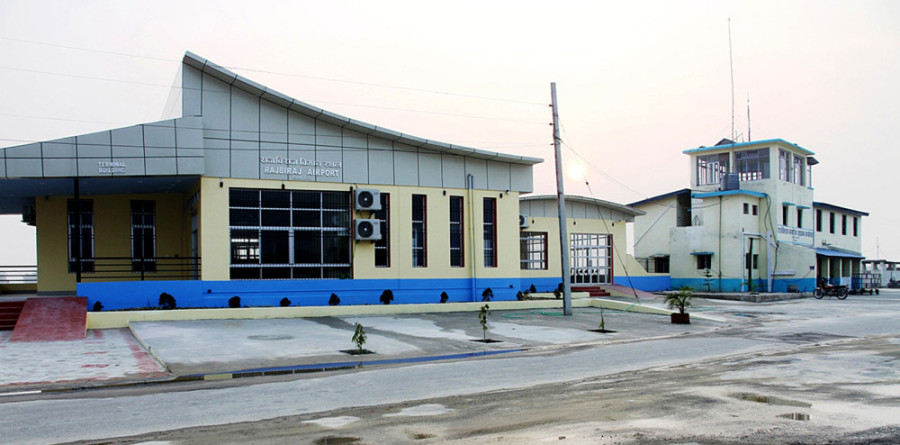
CK Lal
Rajbiraj is slowly waking up from its slumber. Except for the under-construction crossing over Kamala, the section of the Hulaki Rajmarg connecting it with the capital of Madhesh Pradesh is complete. Due to the absence of a bridge, connectivity with the industrial city of Biratnagar is still through the Koshi Barrage on the East-West Highway near Bhardah. The network of roads within the Saptari district has vastly improved. The airport is once again functional, with a daily flight to and from Kathmandu.
For quite some time, Rajbiraj had remained a one-hotel town where every visitor ended up spending their night if they couldn’t go back to Biratnagar the same day. It now boasts of at least four tourist class hotels—defined by one rating site as properties for “the budget, cost-conscious travellers providing basic room amenities, but few services”—and one of them is grandiosely known as the “White House” among locals!
The regeneration of the town can partially be attributed to the increase in the flow of remittances. Saptari is one of the five top source districts for the export of manpower—quite literally because there are very few Madheshi women in the Nepalis Workers Abroad category—from the country. Beneficiaries of remittances build houses, buy consumables, spend on education, purchase health services and spend on marriage ceremonies, which have kickstarted the economy of the long-dormant town.
It’s difficult to pinpoint the period when the first planned settlement of the country began to doze off due to the sheer neglect of national authorities. Commissioned in 1938, Rajbiraj is a recent town compared to other urban centres of Madhesh. Its history is tied to the large-scale deforestation of Charkoshe Jhadi for timber export to British India, the subsequent reclamation of wilderness for the distribution of cleared land to the loyalists of the Rana regime, and the optimisation of revenue collection in the early years of the 20th century.
A typical village along the Indo-Nepal border closest to the Chinnamasta Bhagwati Temple began to grow when Chandra Shamsher commissioned the construction of the first modern irrigation system—Chandra Nahar—in the country for the benefit of birta—“land grants made by the state to individuals, usually on a tax-free and inheritable basis”—holders of the Gorkhali court. Soon after, one of the regular floods of the Saptakoshi damaged a section of the existing headquarters of Saptari at Hanumannagar. The Bada Hakim proposed, and the Rana Prime Minister approved, a new administrative centre for the prosperous district that would be connected with the roadhead in Bihar.
Colonel Dilli Jung Thapa, trained as an engineer in India and Japan, had worked earlier with the British engineers who had been engaged in the construction of Chandra Nahar. He was sent to Jaipur to study the adaptation of Vedic principles for the planning of a modern town. Upon his return, he designed Rajbiraj, literally the seat of the state power, as a mini-Jaipur sometime in the late 1930s. Local birtawals, jamindars, priests and traders of Saptari and Siraha were encouraged to build their townhouses in the newly created settlement. It was declared a municipality in 1959 and was a bustling town for quite a while.
Institutional tweak
Rajbiraj remained the seat of state power—first as the district headquarters, then as the capital of Sagarmatha Zone—till 1990 and again as the centre of district administration thereafter. Some of the most ardent Madheshi monarchists, like Justice Bhagawati Prasad Singh and Justice Aniruddha Prasad Singh, called the region their home.
The border town also remained the locus of oppositional politics, producing pioneers of Madheshi rights such as Vedanand Jha in the 1950s, Gajendra Narayan Singh in the 1980s, Upendra Yadav in the 2000s and CK Raut in recent years. The republicanism of Ramraja Prasad Singh and the separatism of Jaya Krishna Goit also flourished in the region. But despite so much accumulation of capital in the hands of so few birtawals and jamindars since the 1930s, the city failed to produce a notable investor in its future. Economic surplus from the booming agriculture went either across the Koshi to Biratnagar or distant Kathmandu.
If the sustainability of a settlement is entirely dependent upon the activities of the government, even a minor tweak in the institutions of the state can cause a downward spiral. A few border towns such as Biratnagar, Birgunj, Nepalgunj, Bhairahawa and Dhangadhi not only survived but thrived even after the shift of transportation corridor from Hulaki Rajmarg along the Indo-Nepal border to the East-West Highway in the 1970s. The highway almost devastated the Charkoshe Jhadi and facilitated the development of commercial townships in forest clearings closer to the Chure foothills. The older bazaars of Madhesh, such as Gaur, Malangawa, Jaleshwar, Siraha and Rajbiraj, began to lose their charm.
Even though Madhesh Uprisings are sometimes blamed for the displacement of the Nepali-speaking population—colloquially Pahadis—from Madhesh, the flight of landed gentry actually began in the early 1980s. The rise of populism in the wake of the Referendum and the introduction of universal franchise without the moderating influence of organised political parties frightened the landed elite, Madheshis and Pahadis alike, to shift to cities with better access to the corridors of power in Kathmandu.
When education and health were gradually handed over to the profit sector in the 1990s, investors began to build schools, colleges and hospitals in cities with higher populations of the middle class, which in turn forced many affluent Rajbirajiyas (residents of Rajbiraj) to move to Biratnagar, Janakpur and even Kathmandu. It remains to be seen whether federalism and the empowerment of local governments become corrective and help reverse the movement of population.
Restorative measures
Following in the footsteps of the first modern irrigation facilities being introduced in this region, the first agricultural university of Madhesh Pradesh has been set up in Rajbiraj. With a world-class agri-scientist, Baidynath Mahato, at the helm, its contribution to the regeneration of agricultural output through teaching, research and extension looks promising. Institutions of higher learning not only attract students but also help keep scholars rooted in the soil, even in peripheral towns.
There is a need for technical training schools that could be patterned after the Industrial Training Institutes in India to produce skilled manpower. While training centres of the profit sector accredited by or affiliated to the Centre for Technical Education and Vocational Training have done an admirable job, the provincial government can supplement their effort with better-resourced outlets for skill upgradation of workers headed for GCC countries of West Asia or Malaysia that host a large number of Madheshi Workers Abroad.
Due to unfortunate politicking, the ambitious venture of the Madhesh Institute of Health Sciences in Janakpur has begun to lose its initial momentum. Once it begins to function as the fulcrum of health education and research as imagined by its founding Vice-Chancellor, the late Dr Ram Kewal Shah, it will be possible to have its extension services not just in the province but throughout Tarai-Madhesh.
Unnecessary court cases and excessive politicking often hamper development efforts. For a new breed of politicos that prioritises local over the national to rise, more investment is necessary for intellectual activism and knowledge production, something sorely lacking throughout Tarai-Madhesh.




 13.12°C Kathmandu
13.12°C Kathmandu





